Sophitia and Gnostic Sophia
Although most of Alexandras characterization is strictly Hellenic in nature, it also includes some Christian and broadly Abrahamic themes as well. It can be seen in names of some of their moves first and foremost. While the ones like "Angel Step," "Silent Cross," "Exile," or "Heaven to Hell" could just be considered generic names, I don't think it's possible to say the same about "Guardians of the Law," "Evangelic Fate," "Seraphim Cyclone," or "Cherub's Sword." Link to a gallery of some 30 pictures containing those moves.


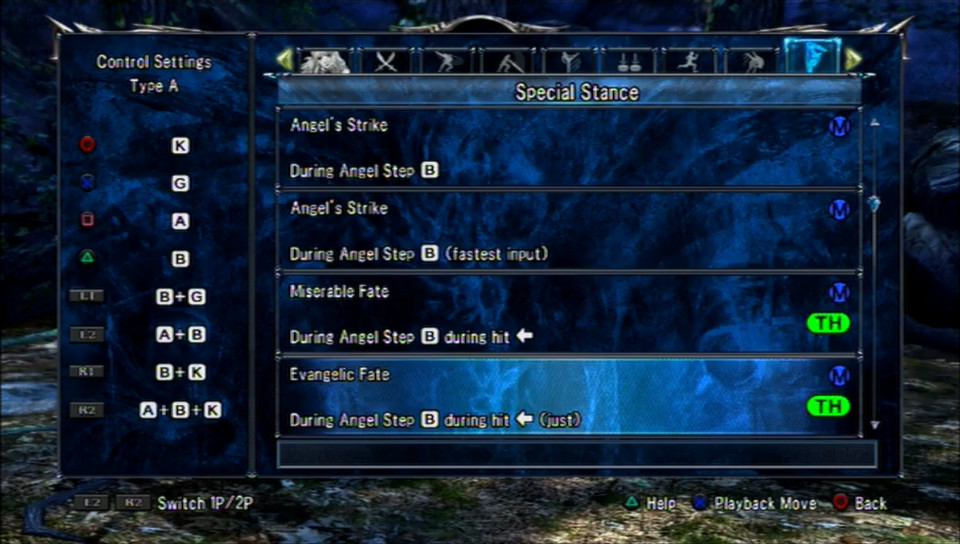

Indeed, I'd argue that it makes sense because Greece was historically one of the first regions to embrace Christianity outside of Judea. Thessalonica was particularly famous for it and praised by Paul the Apostle in one of his Epistles.
In this early period, long before the principle of papal primacy or New Testament Canon, a lot of different ideas and scriptures were floating about, so to say. Those are mostly known as Apocrypha nowadays, and linked to a family of religious belief systems (sharing some, but not all elements in common) referred to as "Gnostic" (from Greek "gnosis"—"knowledge"). One particular book, the Apocryphon of John, contains a prequel to and subversion of the story told in the Old Testament, in the Book of Genesis.
The origin of everything is the One, second comes the "Divine Mother" Barbelo. Together, they emanate a series of spirits—aeons—joined in pairs called syzygies. One of the final aeons is called Sophia ("wisdom" in Greek):
The fourth Light is called Eleleth and it stands over the fourth realm.
With Eleleth are:
Perfection
Peace
Wisdom (Sophia).
Everything that exists so far remains in the Pleroma ("fullness"), which is a kind of divine reality. Later on, the book speaks about the origin of the material world:
A Crisis that Became the World
It happened that the realm (aeon) Wisdom (Sophia)
Of conceptual thought (Epinoia),
Began to think for herself,
She used the thinking (enthymesis)
And the foreknowledge (prognosis)
Of the Invisible Spirit.
She intended to reveal an image from herself
To do so without the consent of the Spirit,
Who did not approve,
Without the thoughtful assistance of her masculine counterpart,
Who did not approve.
Without the Invisible Spirit’s consent
Without the knowledge of her partner
She brought it into being.
Because she had unconquerable Power
Her thought was not unproductive.
Something imperfect came out of her
Different in appearance from her.
Because she had created it without her masculine counterpart
She gave rise to a misshapen being unlike herself.
Sophia saw what her desire produced.
It changed into the form of a dragon with a lion’s head
And eyes flashing lightning bolts.
She cast him far from her,
Outside of the realm of the immortal beings
So that they could not see him.
[She had created him in ignorance.]
Sophia surrounded him with a brilliant cloud,
Put a throne in the center part of the cloud
So that no one would see it.
[Except for the Holy Spirit called the Mother of the Living]
She named him Yaldabaoth.
Yaldabaoth is the chief ruler.
He took great Power (dynamis) from his mother,
Left her, and moved away from his birthplace.
He assumed command,
Created realms for himself
With a brilliant flame that continues to exist even now.
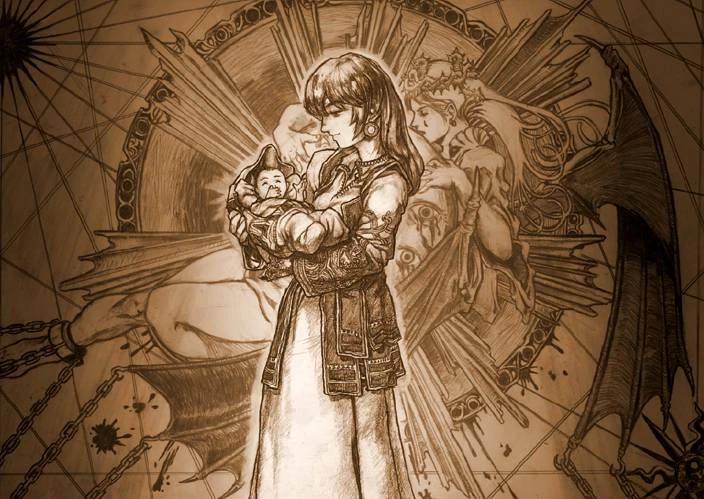
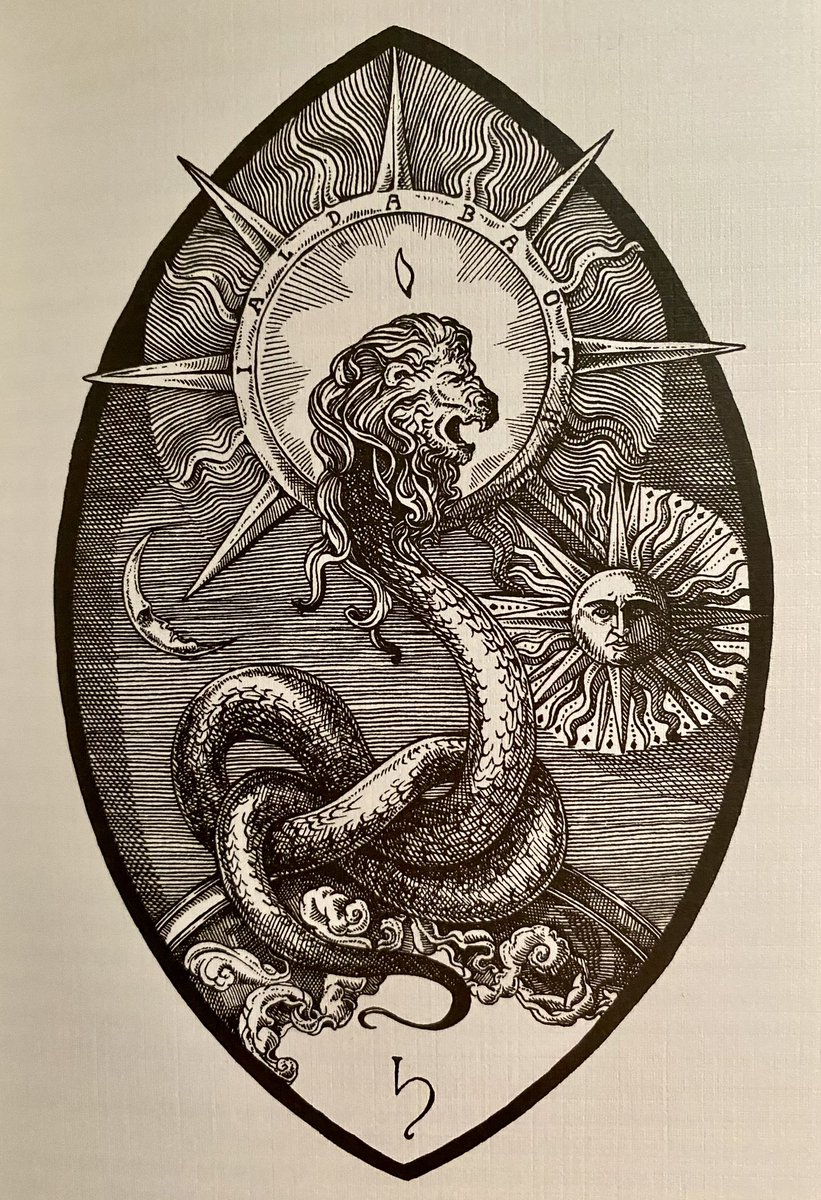
Now, I have a suspicion that the illustration in Sophitia's ending in the first SoulCalibur was inspired by all of this. "Yaldabaoth's" appearance is completely different from how he's usually depicted, but the book talks about him being misshapen from the beginning and changing into the appearance he's known for. It's possible that the background could be showing the moment shortly after his birth, before that happened.
The birth of Yaldabaoth also marked the moment of Sophia's fall from Pleroma. I think that's also depicted in the drawing. If you look at the ring behind the silhouette in the middle, you will notice that the background is different from the rest of it, the intersecting lines disappear. It might be a portal of sorts. You can also see (charred?) wings, which actually belong to the female silhouette, pulled down with chains. There's also a cuff with chains on one of her legs.
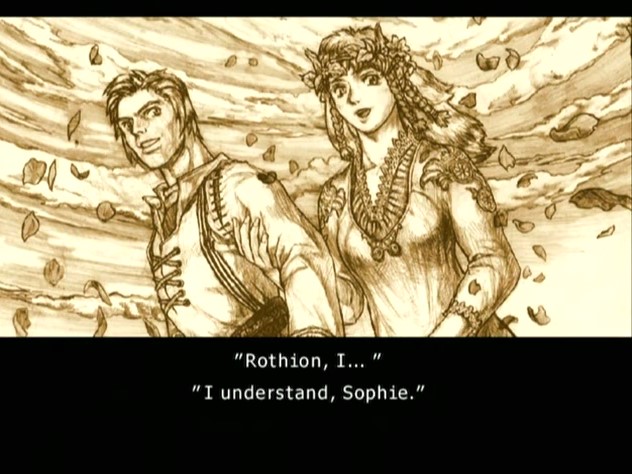
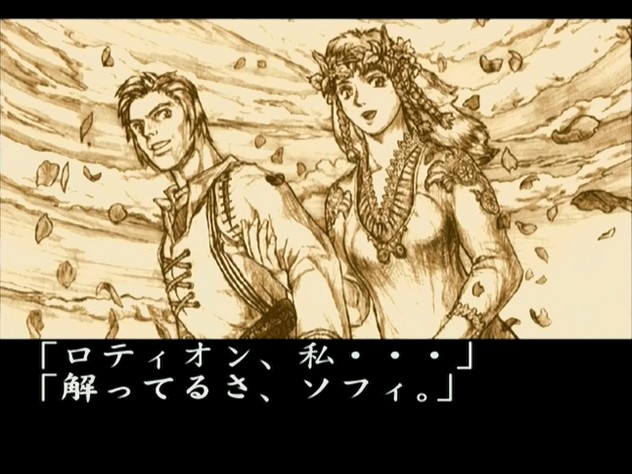
SoulCalibur is also the first game where her Sophitia's name is abbreviated as "ソフィ," which gets translated as "Sophie," a word that could just as well be an abbreviation of "Sophia." Lizardman—Aeon Calcos—also made his first appearance there. It's hard to think about all of this as a coincidence. Gnostic inspirations are also hardly unheard of in Japanese media (the Persona series, for example).
This is hardly relevant to anything else, but I mentioned about how the Apocryphon of John subverts the Book of Genesis before, so I have to write at least a few words about it. The being that Sophia gave birth to—Yaldabaoth, or Saklas—then goes on to assume the role of the Old Testament God and creates the material world together with archons ("rulers") to preside over it. In ignorance, he thinks of himself as the only god (a well-known biblical theme with a completely different interpretation):
Yaldabaoth modeled his creation
On the pattern of the original realms above him
So that it might be just like the indestructible realms.
[Not that he had ever seen the indestructible ones.
Rather, the power in him, deriving from his mother,
made him aware of the pattern of the cosmos above.]
When he gazed upon his creation surrounding him
He said to his host of demons
The ones who had come forth out of him:
“I am a jealous God and there is no God but me!”
[But by doing this he admitted to his demons that there is indeed another God.
For, if there were no other God, whom would he possibly be jealous of?]
Apocryphon of John is also not the only text that tells this story or a very similar one. It's something that more or less pervades Gnostic Christianity with varying perspectives and outlooks.
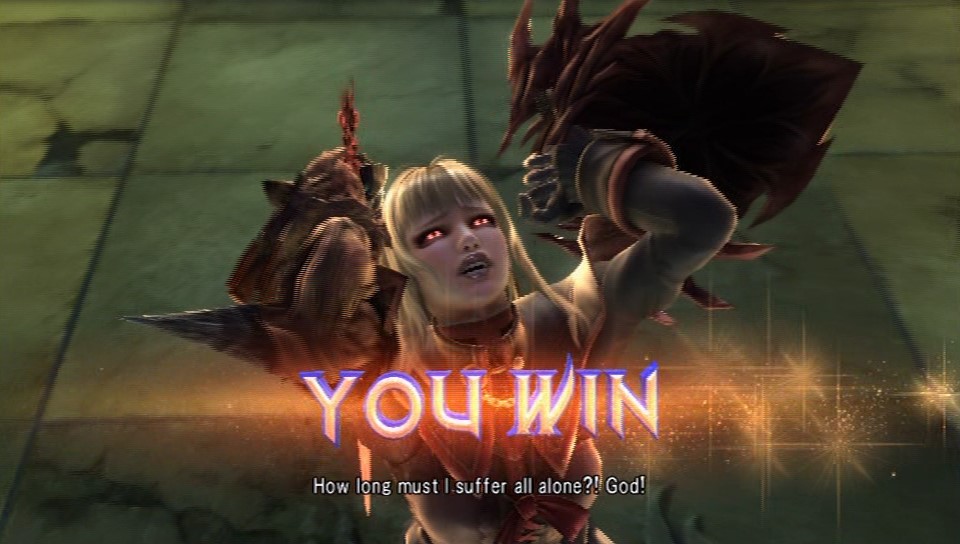
Let me leave you off with this picture. Am I going insane? Maybe.